It wasn’t that long ago that “motion control” was the future of gaming. The Wii was riding high on a wave of new and lapsed users, many of whom were confused by the overly busy joypads of the PS3 and Xbox 360, but our collective love affair with the waggle was to be short lived. Where once the idea of mimicking a sword swing with our Wii-motes in a one to one fashion with Link ignited our imaginations, after Skyward Sword brought that fantasy to life, the idea mostly just made us feel tired and inadequate. One by one, we turned what should have been a lot of energetic swashbuckling into flaccid herky-jerky movements more akin to Beavis and Butthead’s four frame boogie dancing. The industry saw the tide turning and retreated from motion controls, gently sliding the familiar, comfortable joypads back into our waiting, carpal tunnel ridden hands. It wasn’t until the VR rebirth of 2012 and the arrival of high end consumer headsets like the Oculus Rift, the HTC Vive and the PSVR a few years ago, that the idea of getting up from our chairs and shaking our arms around regained its appeal.
This resurgence of VR, now backed up by enough processing power to live up to the failed promises of full immersion made in the 80s and then 90s, has been largely defined by software that requires the player to get physical; swinging their arms, climbing, tossing, shadowboxing, dodging, blocking, turning handles, pulling. It’s really no wonder then, that VR has been embraced by a growing community of health minded enthusiasts for its fitness benefits. It sounds obvious now in hindsight and yet… no one really saw this coming. Certainly not the players but not even the developers. It was all a happy accident, like Play-Doh or the microwave oven. It certainly came as a surprise to Andrew Abedian of Survios, the lead designer/project lead of Sprint Vector, a rocket skate roller derby race game that’s in heavy rotation for those looking to get fit with VR.
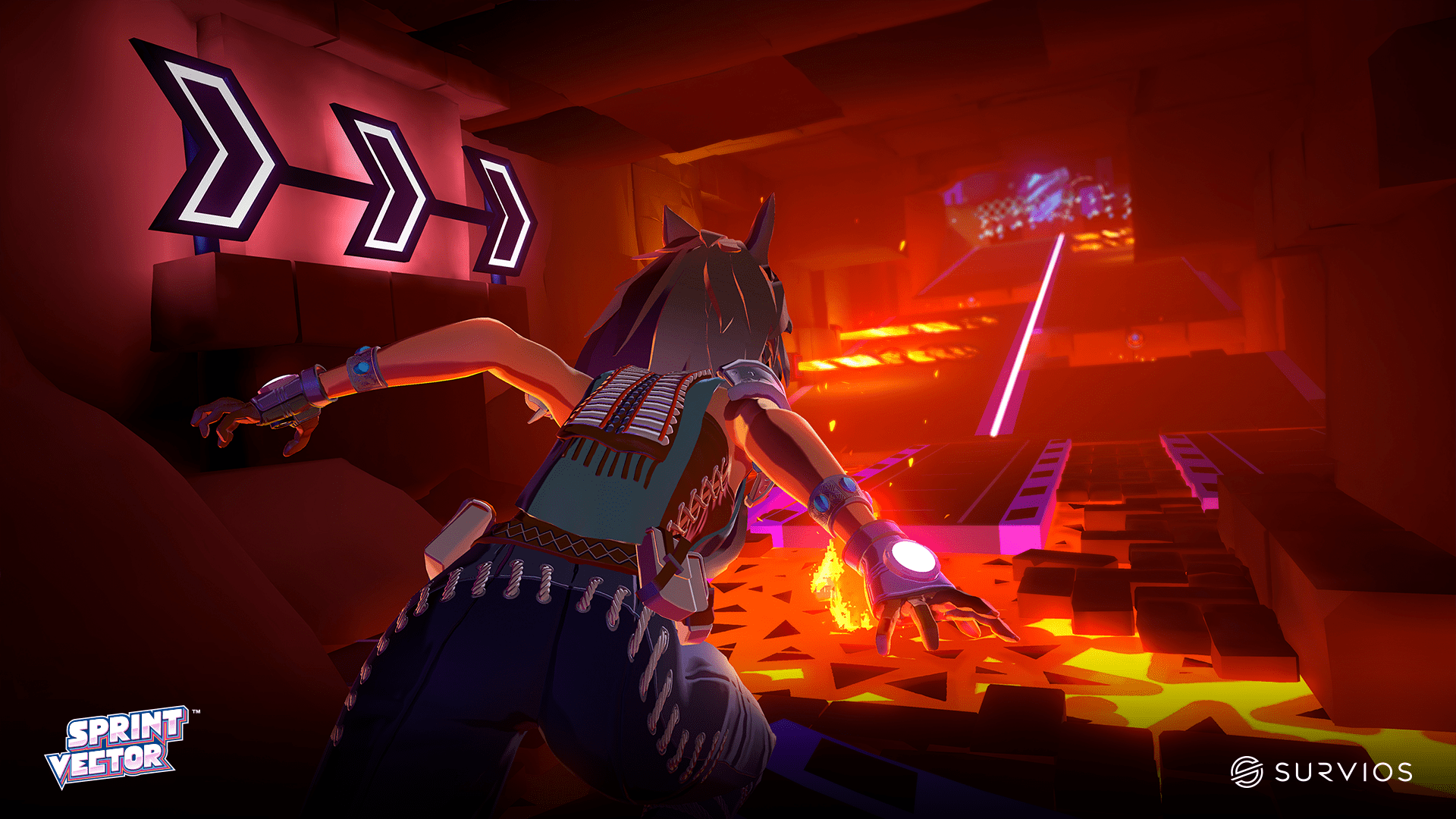

“When we first set out to make Sprint Vector, we were really trying to solve this locomotion problem in VR,” Andrew tells me via phone interview. “We had a prototype really far back that had climbing already in there, very physical aspects of climbing and when I played that back then over a period of, like, 30 minutes I was like, ‘Man, my arms are getting tired,” he pauses for a chuckle. “Like, I’m not really doing a whole lot but I’m getting tired.”
Andrew wasn’t alone. Over at Grab Games, the makers of Knockout League, a dazzling mix of real world boxing and Punch-Out! style arcade antics, creative director Harold Vancol told us via e-mail that the project hadn’t begun with serious fitness applications in mind.
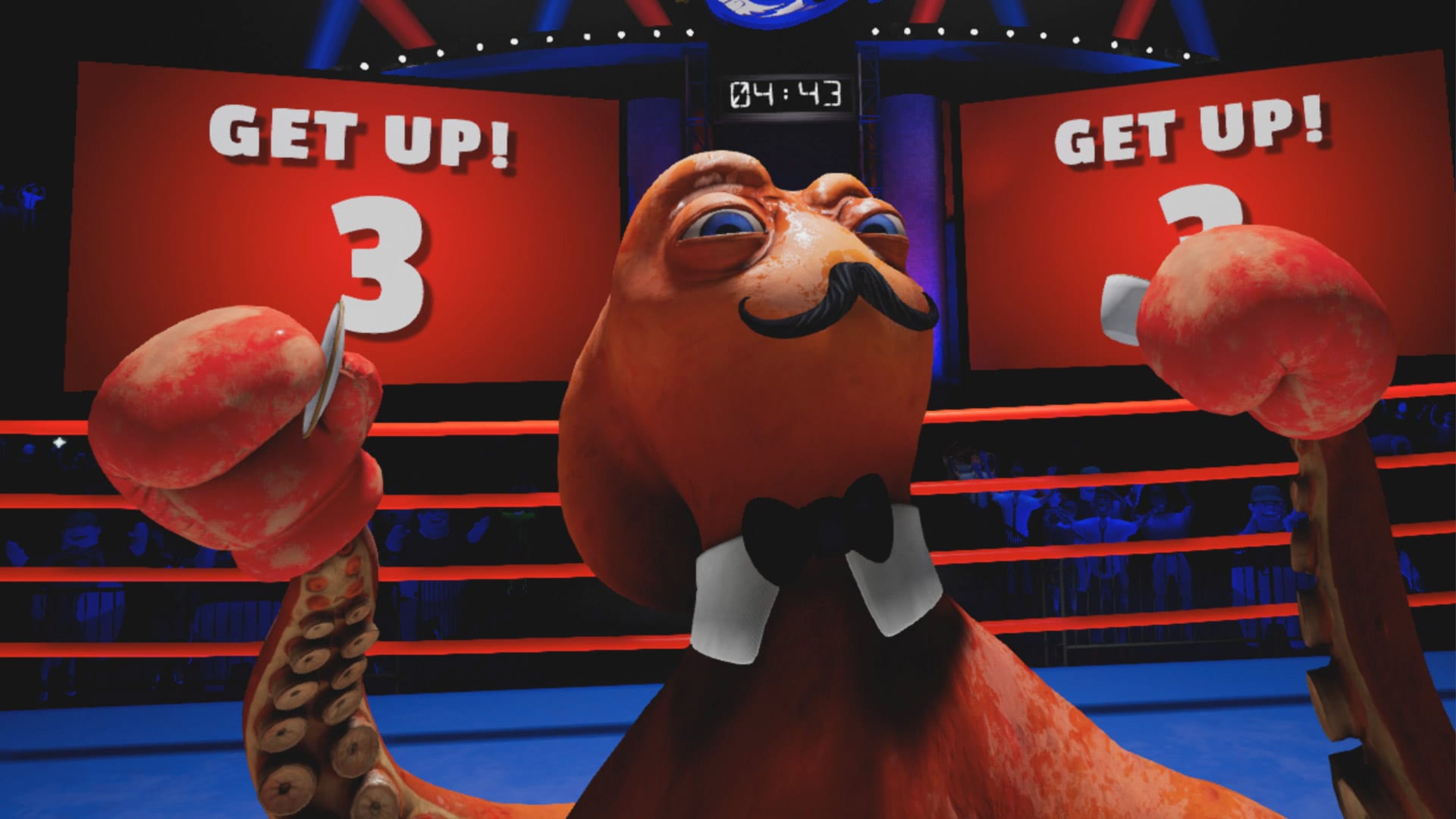
“First and foremost we set out to make a fun game. We also knew that because of the nature of our game we were providing a fun way to get your body moving. What we didn’t know was how much it would get you moving.”
Despite not specifically beginning development of Sprint Vector as a fitness tool, Andrew and his team quickly caught onto the possibilities. “We were like, ‘There’s some pretty heavy fitness potential here because everyone’s sweating, everyone’s huffing and puffing but they’re all having fun and they barely even know that they’re doing exercise. They’re just so zoned into the gameplay that they’re not even registering that their arms are starting to get a bit swollen.’”
When I asked the VR Fit group on Facebook, a community of players looking to track their fitness progress, motivate one another and compete for top scores, to share their VR fitness stories with us for this article, I found a similar thread in the responses. Many of these people happened upon the potential while just looking for good times.
We also knew that because of the nature of our game we were providing a fun way to get your body moving. What we didn’t know was how much it would get you moving.
Diego “JOKERoPALHACO” Beltran told us via the group, “I didn’t even know (about) the concept of VR fitness… The first time I played Sprint Vector I hated it. But before I knew, I was getting competitive about it in there. Then I realized I couldn’t beat the top ranked people in there not only because I needed to improve my in-game skills but because my body just couldn’t take it.”
Alex Kellerman, also a member of the VR Fit group, felt the burn in the beginning, “I was sweating after the tutorial the first time I played Sprint Vector! I could barely finish a race!”
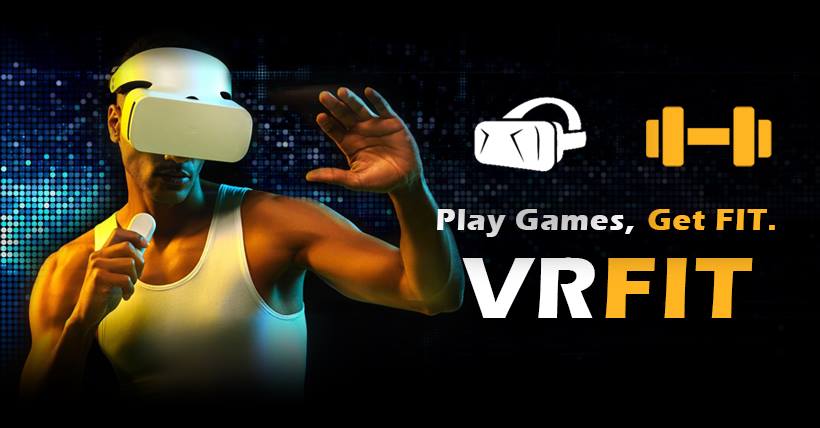
The physical limits of the player was something developers had to be aware of. Harold from Grab Games explained how he and his team tackled the issue, “We had to take into account the amount of physical activity we were asking of our players to defeat opponents. That being said we thought that some players would enjoy the increased physical activity in a game and would also like being able to track their calorie progress so we included that in our plans pretty early on.”
When I asked Andrew about this, he backed up Harold’s statement. “Very early on we started setting up these maximum exertion ranges, like, okay I’m not going to expect the player to break off their arm to try and move fast. I’m gonna put a limiter on it so it becomes more about technique than raw force.”
I was sweating after the tutorial the first time I played Sprint Vector! I could barely finish a race!
Anyone who has played Sprint Vector past the exhaustive tutorial will tell you that violently pumping your arms isn’t going to win races for long. “We just tried to mitigate this exhaustion effect on players so that they could have like five or six races at a time and not just tap out after two. Which, honestly, what did happen a lot during internal testing was that, particularly when you’re racing with up to eight players head to head, you just get so in the zone. You’re in VR and you see this person next to you and you just get this reptilian response where you want to pump your arms faster even though you shouldnt.” I never said so in the interview but I totally started out this way when I tried to compete, going so far as to awaken an old injury in my shoulder.
“You really shouldn’t,” he added with a laugh. Too late, Andrew! My medical bills are in the mail. “There was a significant amount of effort put in to make sure it’s not just about blowing out your arms every race.”
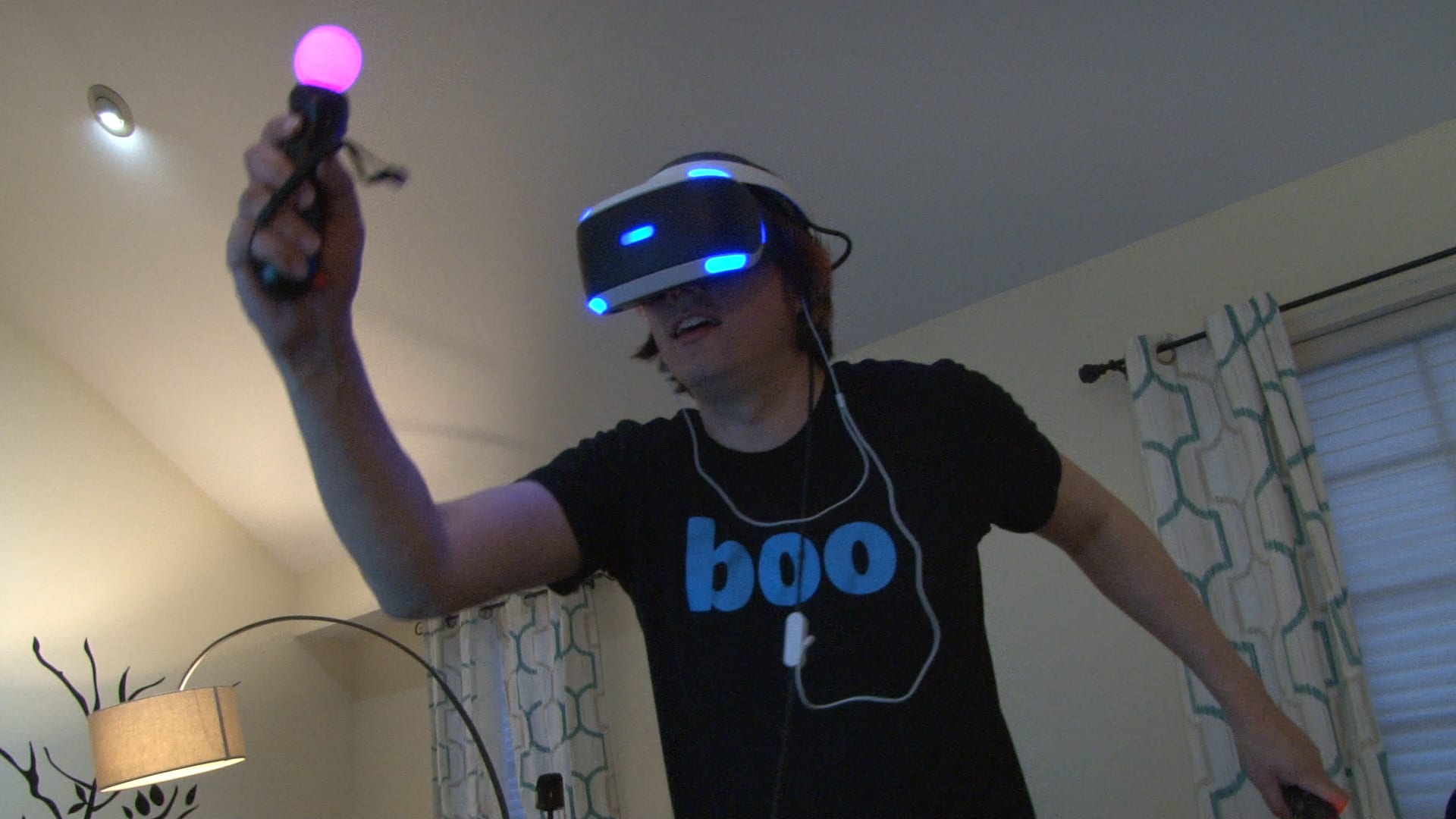
Injury stories like mine aren’t rare but my injury pales in comparison to those suffered by Sonya “hasko7” Haskins, a VR fitness success story and high level competitor in Echo Arena, Ready at Dawn’s zero gravity arena sports game in which players “glide, boost and punch their way” to scoring goals. She tells us via the VR Fit group, “Since I play seated, I have to be careful about overextending (reaching) too far for the disc or a punch. Last year I was playing one day and I literally threw the disc so hard and fast that I was suddenly lying on my back (in my chair) and didn’t even realize it for a second because it happened in VR and I was still upright in the game! Then I realized I was lying on the floor. Worse yet, I had fallen on my left elbow. I had actually bruised it really badly and I tore the tendons off my bone! It was awful.”
There was a significant amount of effort put in to make sure it’s not just about blowing out your arms every race.
Sonya’s story is on the extreme end of things but smashed hands and bruised shins are fairly common. It’s not that surprising considering how VR games like these are only a shade or two removed from real world sports like soccer or basketball. It’s why Diego felt like he could bring his workout routine home, “I gave up going to the gym and lifting weights after years of doing it three times a week because I started feeling like a moron in there looking at myself in the mirror, doing push-ups… But now that I can mix fitness with competitive gaming OMG, I need nothing else lol.”
Competitive spirit is helping push Alex to up his game, “When I’m just playing for fun… and I get a little sweaty and out of breath, I would normally stop, and switch to something less physical. But if I’m playing it with the mindset of working out and I know I’m going to drink a protein shake and take a shower after this… then I’m able to push myself to play longer. The VRFit group just encourages me to do it more often and beat my already high scores.”
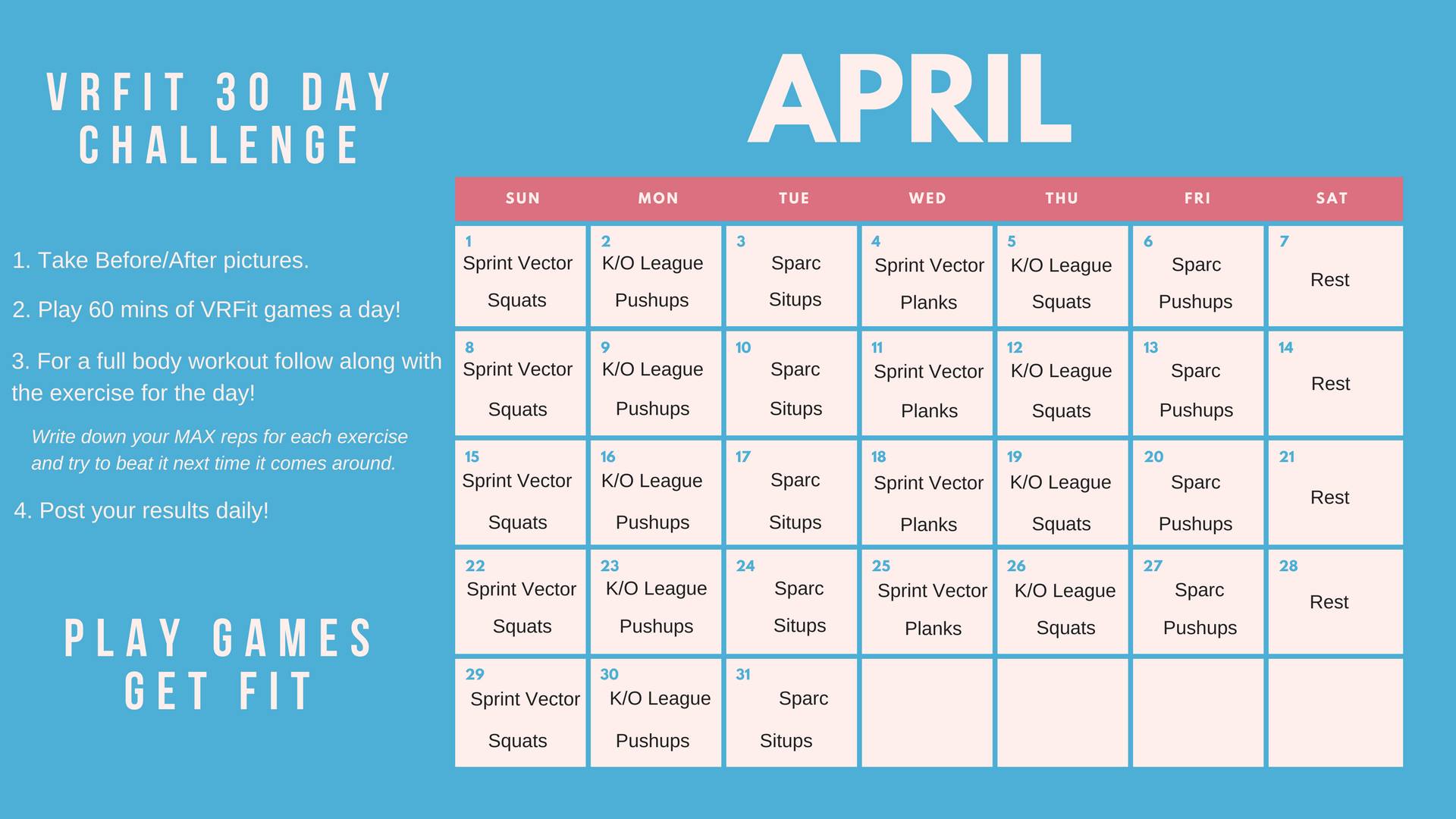
What first drew me to look into the VR fitness community was a series of videos posted by members of the VR Fit group of their insane workouts in Knockout League and crazy course runs in Sprint Vector and I wasn’t the only one. The developers have taken notice as well.
“We love what we’ve been seeing from the community in terms of high scores, workout regimens, and calories burned,” Harold tells me, “A few people in the community have managed to beat our internal high scores which is awesome! We’re excited about the enthusiasm that the community is showing around using Knockout League as a workout tool and we’re looking forward to continuing to support that enthusiasm with updates and more.”
Sprint Vector’s team has been monitoring the internet, reddit and their own Discord channel to keep apace with how the fans are tackling the challenges they layout for them. The community response is a kind of validation of developer Survios’ mission statement. “The philosophy at Survios is that we are creating active VR content. What that really means for us is that (our games) need to get the body involved.”
A few people in the community have managed to beat our internal high scores which is awesome!
The team’s hope was that the player who mastered their system of movement would feel in full control, empowered like a superhero. Diego from the VR Fit group told us that playing Sprint Vector fulfilled his dream of feeling like an American Ninja Warrior.
“It’s amazing to see players get to that point in a relatively short amount of time and start applying it during races and particularly the challenge levels. The challenge levels were designed, in a way, to be broken.
“When we do weekly challenges,” Andrew continues, “we always see the perfect runs through the maps and people in this community are constantly comparing notes to one up each other by like fractions of seconds at this point. We’re down to millisecond differences.”
No one denies that people are improving their scores in games they’re spending hours playing (in Sonya’s case up to ten hours a day at one point) but is VR really a viable way to get fit?
Working out in VR by playing games you would want to play even without the health benefits is one hell of a hook.
“I don’t feel like I’m working out… I’m having fun!” says Chris “Crispy” Pusczak, who left athletics behind after developing asthma in his senior year of high school. “I became a couch potato. Tried follow along videos, diets, etc. All were things I didn’t want to do. Nothing really lasted for more than a couple weeks.”
Sonya, also facing health issues that derailed her usual methods of staying fit, ran off a laundry list of activities that couldn’t hold her interest, “ …traditional gym membership, marital arts, weight loss programs, walking challenges, home workouts, videos, etc. I’ve never enjoyed anything as much nor had as much success with anything compared to VR.” When Sonya says success what she means is that she shed around 45 lbs over 7 months of intense play.
For Alex, “The hardest thing has always been motivating myself to do cardio. This makes cardio more fun! And I don’t have to leave my house to do it.”

Andrew knows that the hurdle that needs to be cleared in order to enjoy his game is high. He describes it as, “You literally have to learn to walk again.” He seems impressed that people have stuck with it. “The team is very happy with how everything has come along. Especially the way people picked up on it. People have already found ways of tracking their sessions using FitBit. They’re muscles are definitely developing over time. So it’s kind of amazing to make something like that in a similar fashion to like Dance Dance Revolution, where people can just have fun but get fit at the same time.”
Sonya sums it up best, “It just feels so natural. I positively feel ‘at home’ in VR, but it’s more than that. You can enjoy VR in your own home, on your own schedule, at your own pace, and in the environments of your own choosing. You can’t get a more personally tailored fitness program.”
You don’t have to be a VR fitness warrior to see the benefits, just playing the games on a regular basis with an eye toward progressing your skill level will get your heart pumping and your body moving. Andrew sees the fitness aspect of VR as something that increases the immersion level.
You can’t get a more personally tailored fitness program.
“Swinging our arms is something we already do as humans. So it doesn’t feel like you’re fighting your body. It can be a rhythmic groove that you just kind of get into. Generally we’ve found it’s a nice way to do core exercises, cardio, etc. Just get your heart rate up.”
He later tells me, while describing his experience playing and then aching as a result of playing, Survios’ new boxing game, Creed: Rise to Glory, “The more the body is engaged the more the mind can just let go and just accept virtual reality as the space they’re in.“
As game developers reach for immersion and the physical engagement of the player, it might not be VR boxing or racing or climbing that burns those calories. It might be activities like nocking an arrow, drawing a bowstring, and letting winged death fly in Skyrim VR that gives us a workout. It’s a good place to start if you’re thinking of stepping to challenge the high scores touted by the VR fitness community at large. After all, for Chris from the VR fit group, Skyrim VR is considered a rest day activity.
Palmer Luckey, alone super imposed on the beach, floating zen-like in his amniotic sack on the cover of Time Magazine, this is not. VR may isolate the individual from their immediate surroundings, but it also unites players from all over the globe in competition, camaraderie and pursuit of common goals. It’s what makes this moment different from previous ones built around peripherals like the Wii Fit, togetherness.
For the full transcript of my interview with Andrew Abedian in which the Sprint Vector Lead Designer/Project Lead and I discuss the similarities and differences between his game and Mario Kart, dive deeper into the development and testing phases and talk about the time he got drunk and raced someone from QA , click here.

